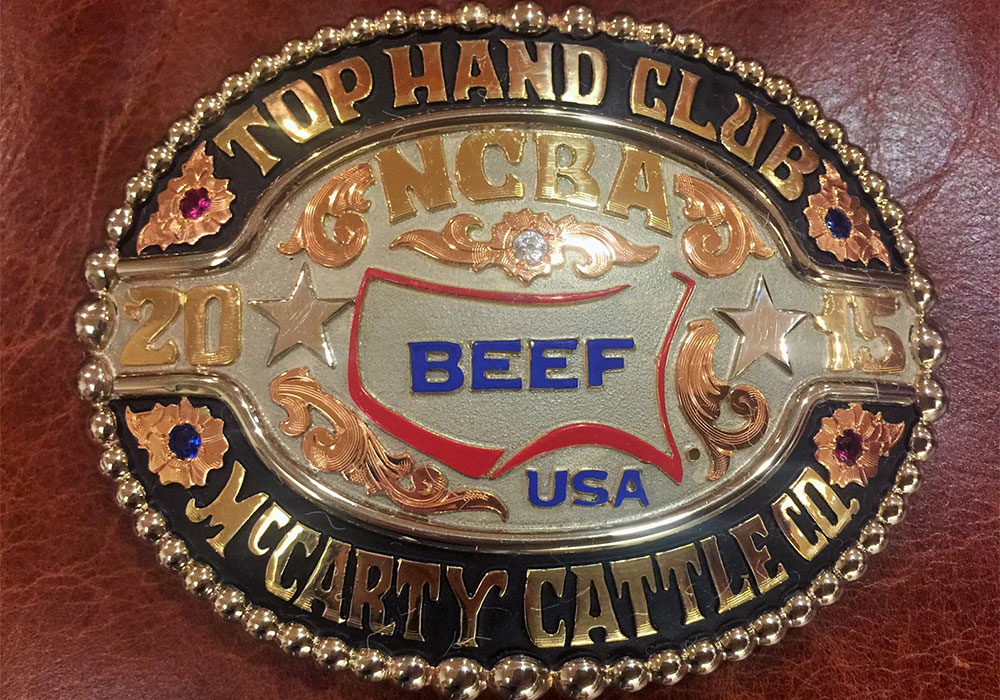
Turn Member Referral Into a Status Symbol
At the National Cattlemen's Beef Association, member-get-a-member is more than a one-time campaign. Its long-running Top Hand Club confers elite status upon members who refer new members to the association. Here's how NCBA turns its true believers into busy recruiters.
In a post about “member-get-a-member” campaigns two weeks ago, I posed a dream scenario, one in which your members do all your recruitment for you. It was a purposefully unrealistic hypothetical. But how does one-third of your recruitment sound, instead?
That’s how much of the National Cattlemen’s Beef Association’s new-member recruitment comes through member referrals every year, driven by its member-get-a-member (MGAM) program, the Top Hand Club.
Some of our really good Top Hands, I would almost look at them as an extension of the membership staff.
The Top Hand Club warrants the term “program,” rather than “campaign,” because it’s not a limited, one-time effort. Rather, the Top Hand Club is ongoing, and it’s been a part of NCBA’s member-recruitment operations since 1982. (It’s older than I am.) NCBA’s recruitment year ends today; in the year ending September 30, 2014, it brought in 1,340 new members via about 300 member recruiters, and this year NCBA projects similar numbers, says Kate Maher, senior director for member and affiliate services at NCBA, which has about 28,000 total members.
Among the 300 member recruiters in 2014, about 100 earned or maintained membership in the Top Hand Club by recruiting three new members for the first time or, for existing club members, recruiting two new members. Prizes for Top Hand Club recruiters range from lapel pins and belt buckles up to a grand-prize $15,000 credit toward equipment from club sponsor Case IH Agriculture. The top three recruiters are also recognized at NCBA’s annual awards banquet.
Maher says Top Hand Club recruiters are deeply engaged members who, amid all the material incentives, are also highly motivated to support NCBA and grow its membership. “These are people that have seen how our policy and how our efforts in DC really represent people out in the country, and they like to share that story. It’s very personal to them; they’ve had an issue that’s personally affected them and so they work really diligently to share their story and encourage membership,” she says.
Of course, “getting your members to do your recruitment for you” is misleading. MGAM might more accurately be called SGMGAM (staff get members to get members). It doesn’t happen without appropriate care and feeding.
Over those 30-plus years, the Top Hand Club program has “ebbed and flowed,” Maher says, and direct staff oversight has correlated with times of growth. On NCBA’s current membership staff, about one-quarter of a full-time employee’s time is dedicated to the Top Hand Club. That work involves producing a monthly email bulletin for club members, interviewing top recruiters and sharing their tips, providing resources to make recruiting easier, tracking and reporting recruitment numbers, maintaining sponsor relationships, and encouraging participation in periodic short-term recruitment pushes during the year.
NCBA also encourages its state affiliate associations to get involved and recognizes them for it. For instance, every recruiter’s state affiliate is listed by his or her name on the roster of Top Hand Club members [PDF]. This component-level engagement is crucial, because that’s where so much face-to-face interaction happens among NCBA members. “The more involved we get our state affiliates, the more incentives we give them, the more credit we give them, the more likely they are to spread the word about our program,” Maher says.
Regular updates to Top Hand Club standings and recognition of recruiters in e-newsletters and at the yearly awards banquet keeps people aware of the referral program, and it “creates a little competition, too,” Maher says.
All of this amounts to making members feel that, by recruiting new members to NCBA, they’re a part of something special, Maher says. They’re already the association’s true believers, so adding to that sense of belonging and importance via the Top Hand Club program is a natural way to push them toward sharing their passion for the organization with others.
That’s why “club” is an important word, Maher says. “I think a lot of our people would be scared off by just calling it ‘member get a member,'” she says. “If you name it something else and make it seem a little bit elite, too, some people really like being part of something a little bit different.”
She also recommends a name that is relevant to your association’s industry. (For you city slickers like me, “top hand” is a term for a superior cowboy or ranch hand.) “Some of our really good Top Hands, I would almost look at them as an extension of the membership staff,” Maher says.
Does your association have an ongoing member-get-a-member program? How do you dedicate staff resources to it? Would a sense of exclusivity add to the appeal for potential recruiters? Share your thoughts in the comments.
(National Cattlemen’s Beef Association)






Comments